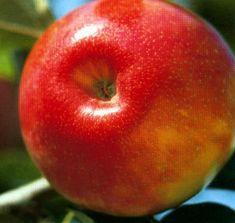
Honeycrunch apples from France have started arriving in commercial volumes in the UK for the first time.
The fruit brand is owned in Europe exclusively by French producer-marketer Pomanjou. This season there are some 6,000 tonnes of the bi-coloured variety available, 5,500t of which are grown in the Loire Valley. The remaining tonnage is produced in south-west France, northern France and northern Germany where orchards are too young to produce large volumes.
“We have had excellent growing conditions this summer with good temperatures and very little rainfall in late spring and throughout the summer,” said Marc Bahbah, marketing director at Pomanjou. “The harvest started three weeks ago and is nearly complete and production is up from 3,000 tonnes last year as you would expect with young trees coming into production.”
Fruit has been arriving in the UK for nearly two weeks and is available in supermarkets with Pomanjou also making plans to market to selected wholesalers.
The season is expected to last until the end of February provided there is still fruit in store as Pomanjou plans to keep an even flow coming to market: “We are not going to be slowing sales down, so the season may finish a little earlier,” said Bahbah.
Honeycrunch is clearly positioning itself at the top end of the market and is being offered under supermarket premium labels in four and six packs as well as in single-layer trays for loose fruit.
But it is not just “another bi-coloured apple,” according to Bahbah. Its parent varieties are the US cultivars Honey Gold and Macoun and it has been bred in the US. “It is radically different from any other apple in terms of its taste characteristics,” said Bahbah. “It is explosively crisp, and neither particularly sweet nor particularly sharp. It has a crisp, crunchy texture that is lighter than either Braeburn or Pink Lady, for example.”
And the good news for the UK as production increases is also that the size profile is more in line with market requirements. With limited volumes on trees over the past two years, sizes tended to be larger, but this season they are ideal for pre-pack trays.



